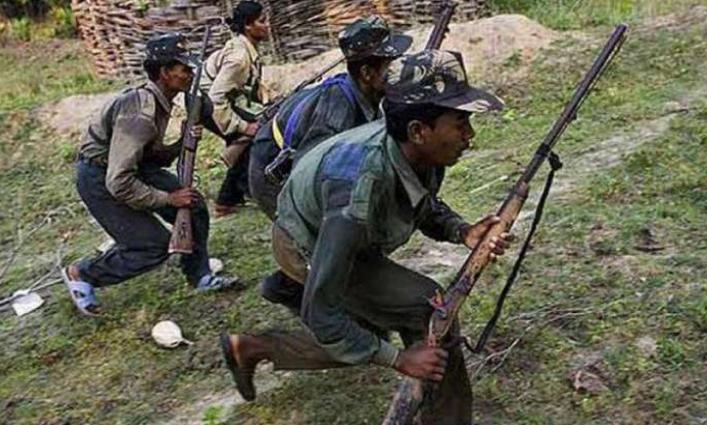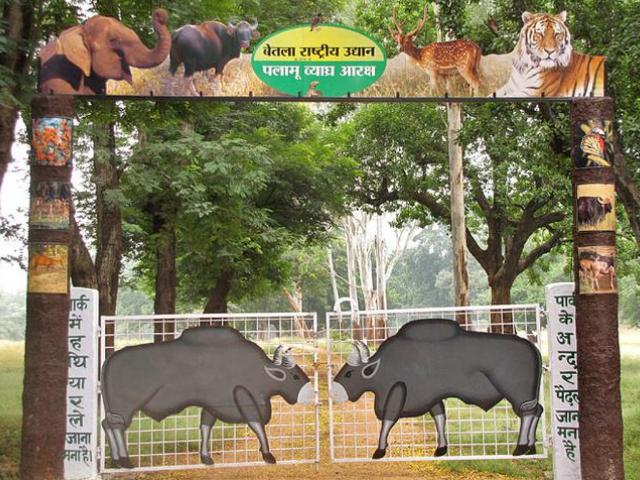I begin with an apology for being harsh and an offensive headline. But the Plight of Palamu tiger reserve is unbearable. Almost five decades after this protected area was set up in 1974 under Project Tiger, the situation has gone down from bad to worse. Now hold your breath as I explain : There are 191 villages inside and around it. Villagers, cattle and stray dogs are seen in every nook and corner of the reserve leaving no space for wildlife. Over 40 years ago, Naxal menace started in the park followed by the security forces and gun battles. The ultras continue to dominate. In 2017 the Union ministry of road, transport and highway gave its nod for the conversion of a 120 km-stretch of the state highway in the Reserve into a national highway.And as if it was not enough ,the Indian railways are ready with plans to lay a third track inside the core forest area. The national park has everything except the wild animals. Vision Document After HC Intervention

All this has happened when Palamu tiger reserve has been classed within the Central Indian Landscape Complex–the largest tiger landscape in the country as described by the Wildlife Institute of India(WII). This makes it part of the 25,000 square km of Bandhavgarh-Sanjay-Guru Ghasidas- Palamau Landscape. Palamau Tiger Reserve is also connected to the Achanakmar-Kanha Tiger Landscape through the Jashpur and Mahan Forests of Chhattisgarh. In North East and South directions, it is connected with the forests of Bihar and Odisha respectively. But for decades Palamu was converted into a war zone and the forest department field staff was sandwiched between the left wing ultras and the security forces. How would you save a tiger in a war zone?, asks a former forest department official closely related to Palamu. With Naxals came timber and mining mafia, both protected by the outlaws. Recently a vision document prepared by the government of Jharkhand has explained the plight of Palamu. It said, “In the current scenario, the reserve has no inviolate area”. This document was prepared after the Jharkhand High Court took suo moto cognizance of the death of elephants in September 2021.
Also read: Railways' Push For Tracks in Tiger Reserves Contradicts its Green Claims
The court of Chief Justice Dr Ravi Ranjan and Justice SN Prasad took suo motu cognisance of media reports regarding the death of elephants and ordered the Environment Secretary and Head of Forests to be present in the court. Later the government prepared an over 350 page vision document and presented before the court explaining in detail the crisis faced by the forest. The document also described in detail a plan for reintroduction of tigers in the park. The National Tiger Conservation Authority (NTCA) in its report of Management Effectiveness Evaluation-2018 of tiger reserves of India mentioned the declining trend of tiger population in PTR and also suggested actionable points to be undertaken by the state government. When the national park was set up there were 50 tigers .The number declined to 45 in the year 1990. In five years from 2005-2010, it dwindled from 38 to 06. In 2019 it further went down to 3 and then zero in the following years. Encroachment of jungle to Naxals ,to railways and roads, all contributed to the fragmentation of the forest leading to loss of the wildlife.
Huge Task to find Space for Wildlife in the Tiger Reserve
On January 21, 2022 , the Jharkhand High court issued directives to translocate tigers in Palamu and initiate steps in this direction . Before the officials even think of reintroducing the big cat, they have a herculean task of finding “ an inviolate space for the predator and prey” amidst large number of people living inside, railway tracks and highways .The population of villagers living inside park has grown manifold - more than 5 times -after independence and they use the reserve for their daily needs .Despite speed restrictions, the trains are passing at high speed killing animals. In fact, the habitat of Palamu tiger reserve is divided into four quadrats by North-South SH-09 and East-West Sonnagar Patratu freight line. “A feasible solution needs to be worked upon so as to strike a balance between infrastructural demands and need for habitat contiguity for unhindered migration of wild animal”, the vision document pleads.
“The area covered under grassland is abysmally low and is poorly interconnected. There is an immediate need for creation of large scale inviolate areas by relocating villages which are willing to get resettled to a better location, expansion of area under grassland and connecting these grasslands with each other for better migration of herbivores from one grassland to other ”, it explained. Tiger reintroduction amidst the presence of human population may also lead to man- animal conflict, officials apprehend. They cited the example of Satkosia tiger reserve where the animal was killed by villagers after it was translocated from Kanha National Park of Madhya Pradesh. Hunting has been part of the lives of local people in Palamu and tiger poaching was common in the park.
Government ready To Surrender Half of the Reserve
Facing multiple crises and problems plaguing the park, the officials have also realized that it was not possible to get the whole area of Palamu tiger reserve as 1129 sq km as disturbance free . “Neither total area can be made disturbance free nor is it required, '' the government document said . It also said “ Palamu Tiger reserve can have a maximum 500 sq km disturbance free area in future, which will be sufficient for harboring 40-50 tiger”. Currently there are 8 villages inside the Core and Critical tiger habitat of the reserve . Four of them, namely Kujrum, Latu, Henar and Ramandag are situated in the core of core habitat and need to be relocated on priority basis.As many as 24 other habitations need to be resettled out of Tiger Reserve, which would make available about 500 sq km of inviolate area.
"The tiger reserve needs to have a disturbance free area for the growth of prey base and breeding of tigresses”, the report said. The existing double lined railway track along Son Nagar -Patratu, bifurcates core habitat of North Division ( of the park) in two halves, making it almost impossible for large mammals and reptiles to migrate from one side to other. There have been incidents of death of wild animals while crossing railway tracks. Imagine ill effects of the third proposed track on the jungle. Have mercy Indian Railways.





Not just very interesting and informative, but hats off for the extensive research and listing of references which makes it so much more authentic.
ReplyDelete